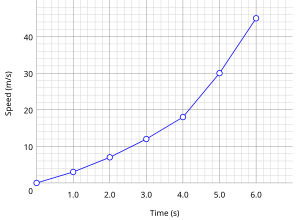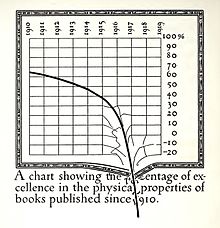Date: July 31, 2018
Time is an agent as 'Elemental' is a chart. The aspect of communique marks it, it is self to the mastery of what is a a lake in an ocean of water. The salt is a tick at the clock of what is a pint of a liter of measure.
To discuss the chart at the basis of electricity would indeed be difficult as the AC/DC is the only reference at this time and as such I will prospect P.G.&E. to power this fathom for the thought that has yet to be navigated by the English language.
At the conduction to the grounded, a foremost nest, it is the run that makes a pole to the very next hub (the bucket at the top of P.G.&E.'s poles). To description and as the bird is example to the landing, the process delivers.
Types of chemical agent - OPCW
https://www.opcw.org/about-chemical-weapons/types-of-chemical-agent/
List of chemical warfare agents
Jump to navigation
Jump to search
A chemical weapon agent (CWA) is a chemical substance whose toxic properties
are used to kill, injure or incapacitate human beings. About 70
different chemicals have been used or stockpiled as chemical weapon
agents during the 20th century. These agents may be in liquid, gas or
solid form.
In general, chemical weapon agents are organized into several categories according to the physiological manner in which they affect the human body. Division may also be by tactical purpose or chemical structure. The names and number of categories varies slightly from source to source, but in general, types of chemical warfare agents are as follows:
These
are substances that are not intended to kill or injure. They are often
referred to as Riot Control Agents (RCAs) and may be used by civilian
police forces against criminals and rioters, or in the military for
training purposes. These agents also have tactical utility to force
combatants out of concealed or covered positions for conventional
engagement, and preventing combatants from occupying contaminated
terrain or operating weapons. In general, harassing agents are sensory
irritants that have fleeting concentration dependent effects that
resolve within minutes after removal. Casualty effects are not
anticipated to exceed 24-hours nor require medical attention.
| Part of a series on | |||
| Chemical agents | |||
|---|---|---|---|
| Lethal agents | |||
| Incapacitating agents | |||
|
|||
In general, chemical weapon agents are organized into several categories according to the physiological manner in which they affect the human body. Division may also be by tactical purpose or chemical structure. The names and number of categories varies slightly from source to source, but in general, types of chemical warfare agents are as follows:
Harassing agents
Tear agents
These sensory irritants produce immediate pain to the eyes and irritate mucous membranes (aka lachrymatory agent or lachrymator).- a-Chlorotoluene
- Benzyl bromide
- Bromoacetone (BA)
- Bromobenzylcyanide (CA)
- Bromomethyl ethyl ketone
- Capsaicin (OC)
- Chloracetophenone (MACE; CN)
- Chloromethyl chloroformate
- Dibenzoxazepine (CR)
- Ethyl iodoacetate
- Ortho-chlorobenzylidene malononitrile (Super tear gas; CS)
- Trichloromethyl chloroformate
- Xylyl bromide
Vomiting agents
These sensory irritants are also termed sternators or nose irritants. They irritate the mucous membranes to produce congestion, coughing, sneezing, and eventually nausea.- Adamsite (DM)
- Diphenylchloroarsine (DA)
- Diphenylcyanoarsine (DC)
Malodorants
These are compounds with a very strong and unpleasant smell, which produce powerfully aversive effects without the toxic effects of tear agents or vomiting agents.Incapacitating agents
These are substances that produce debilitating effects with limited probability of permanent injury or loss of life. The casualty effects typically last over 24 hours, and though medical evacuation and isolation is recommended, it is not required for complete recovery. These, together with harassing agents, are sometimes called nonlethal agents. There may be as high as 5% fatalities with the use of these agents.Psychological agents
These are substances that produce casualty effects through mental disturbances such as delirium or hallucination.- 3-Quinuclidinyl benzilate (BZ)
- Phencyclidine (SN)
- Lysergic acid diethylamide (LSD)
Other incapacitating agents
These substances have also been investigated as incapacitants, though they operate more through interactions outside the central nervous system.- KOLOKOL-1 (tranquilizer)
Lethal agents
These substances are for producing chemical casualties without regard to long-term consequences or loss of life. They cause injuries that require medical treatment.Blister agents
A blister agent is a chemical compound that irritates and causes injury to the skin. These substances also attack the eyes, or any other tissue they contact.Vesicants
The vesicants are substances that produce large fluid-filled blisters on the skin.Nitrogen mustards
- Bis(2-chloroethyl)ethylamine (HN1)
- Bis(2-chloroethyl)methylamine (HN2)
- Tris(2-chloroethyl)amine (HN3)
Sulfur mustards
- 1,2-Bis(2-chloroethylthio) ethane (Sesquimustard; Q)
- 1,3-Bis(2-chloroethylthio)-n-propane
- 1,4-Bis(2-chloroethylthio)-n-butane
- 1,5-Bis(2-chloroethylthio)-n-pentane
- 2-Chloroethylchloromethylsulfide
- Bis(2-chloroethyl) sulfide (Mustard gas; HD)
- Bis(2-chloroethylthio) methane
- Bis(2-chloroethylthiomethyl) ether
- Bis(2-chloroethylthioethyl) ether (O Mustard; T)
Arsenicals
- Ethyldichloroarsine (ED)
- Methyldichloroarsine (MD)
- Phenyldichloroarsine (PD)
- 2-Chlorovinyldichloroarsine (Lewisite; L)
Urticants
The urticants are substances that produce a painful weal on the skin. These are sometimes termed skin necrotizers and are known as the most painful substances produced.- Phosgene oxime (CX)
Blood agents
These substances are metabolic poisons that interfere with the life-sustaining processes of the blood.- Cyanogen chloride (CK)
- Hydrogen cyanide (AC)
- Arsine (SA)
Choking agents
These substances are sometime referred to as pulmonary agent or lung irritants and cause injury to the lung-blood barrier resulting in Asphyxia.- Chlorine (CL)
- Chloropicrin (PS)
- Diphosgene (DP)
- Phosgene (CG)
Nerve agents
Nerve agents are substances that disrupt the chemical communications through the nervous system. One mechanism of disruption, utilized by the G, GV, and V series of chemicals is caused by blocking the acetylcholinesterase, an enzyme that normally destroys and stops the activity of acetylcholine, a neurotransmitter. Poisoning by these nerve agents leads to an accumulation of acetylcholine at the nerve axon, producing a perpetual excited state in the nerve (e.g. constant muscle contraction). The eventual exhaustion of muscles leads to respiratory failure and death. A separate class of nerve agents are related to Tetrodotoxin, frequently abbreviated as TTX, is a potent neurotoxin with no known antidote. Tetrodotoxin blocks action potentials in nerves by binding to the voltage-gated, fast sodium channels in nerve cell membranes, essentially preventing any affected nerve cells from firing by blocking the channels used in the process.G series
These are high volatility nerve agents that are typically used for a nonpersistent to semipersistent effect.- Tabun (GA)
- Sarin (GB)
- Soman (GD)
- Cyclosarin (GF)
GV series
These agents have a volatility between the V and G agents and are typically used for a semi-persistent to persistent effect.V series
These agents have low volatility and are typically used for a persistent effect or liquid contact hazard.T series
These agents are related to the puffer fish Tetrodotoxin- Saxitoxin (TZ)
Other
Chart - Wikipedia
https://en.wikipedia.org/wiki/Chart
Line chart - Wikipedia
https://en.wikipedia.org/wiki/Line_chart
Possible graph for distributions:
Line chart
This simple graph shows data over intervals with connected points
Contents
History
Some of the earliest known line charts are generally credited to Francis Hauksbee, Nicolaus Samuel Cruquius, Johann Heinrich Lambert and William Playfair.[3]Example
In the experimental sciences, data collected from experiments are often visualized by a graph. For example, if one were to collect data on the speed of a body at certain points in time, one could visualize the data by a data table such as the following:
Graph of Speed Vs Time
| Elapsed Time (s) | Speed (m s−1) |
|---|---|
| 0 | 0 |
| 1 | 3 |
| 2 | 7 |
| 3 | 12 |
| 4 | 20 |
| 5 | 30 |
| 6 | 45.6 |
Understanding the process described by the data in the table is aided by producing a graph or line chart of Speed versus Time. Such a visualisation appears in the figure to the right.
Mathematically, if we denote time by the variable
 , and speed by
, and speed by  , then the function plotted in the graph would be denoted
, then the function plotted in the graph would be denoted  indicating that
indicating that  (the dependent variable) is a function of
(the dependent variable) is a function of  .
.
Best-fit
A parody line graph published in 1919.
It is simple to construct a "best-fit" layer consisting of a set of line segments connecting adjacent data points; however, such a "best-fit" is usually not an ideal representation of the trend of the underlying scatter data for the following reasons:
- It is highly improbable that the discontinuities in the slope of the best-fit would correspond exactly with the positions of the measurement values.
- It is highly unlikely that the experimental error in the data is negligible, yet the curve falls exactly through each of the data points.
A true best-fit layer should depict a continuous mathematical function whose parameters are determined by using a suitable error-minimization scheme, which appropriately weights the error in the data values. Such curve fitting functionality is often found in graphing software or spreadsheets. Best-fit curves may vary from simple linear equations to more complex quadratic, polynomial, exponential, and periodic curves.[4]
















No comments:
Post a Comment